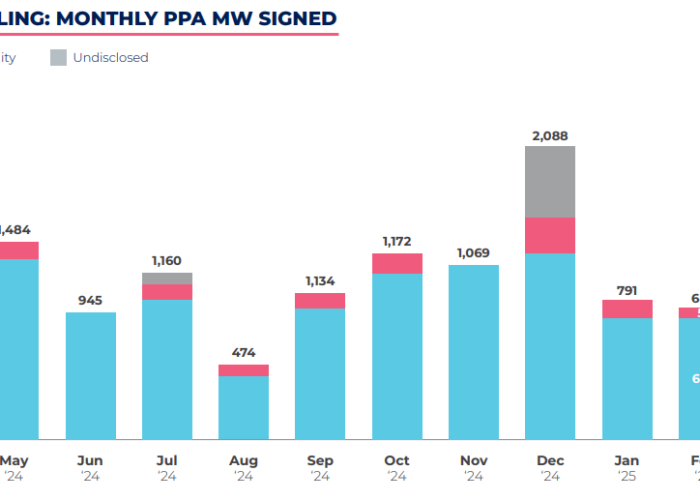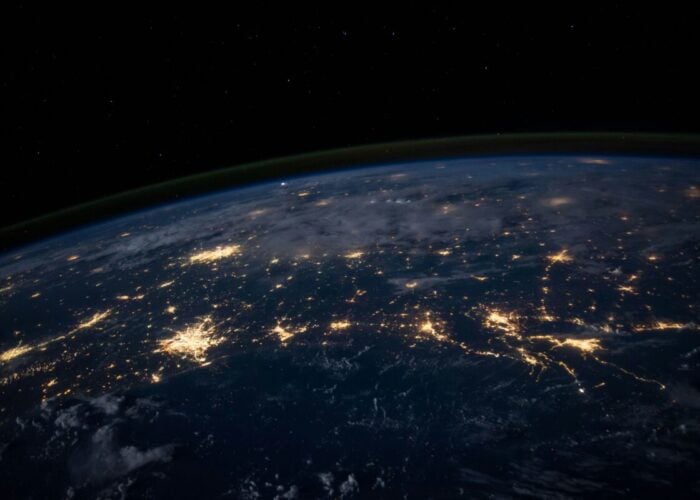
A “toxic inventory” of modules has been building up in Europe because market growth has been slower than expected since last year, leading to fears that a huge portion of old inventory will need to be written off, according to analyst firm S&P Global.
Last year saw a dramatic demand growth in Europe due to the energy crisis and skyrocketing electricity prices, but shipments of new solar panels considerably outpaced ahead of installations, Edurne Zoco, executive director of clean energy technology at S&P Global tells PV Tech Premium.
Unlock unlimited access for 12 whole months of distinctive global analysis
Photovoltaics International is now included.
- Regular insight and analysis of the industry’s biggest developments
- In-depth interviews with the industry’s leading figures
- Unlimited digital access to the PV Tech Power journal catalogue
- Unlimited digital access to the Photovoltaics International journal catalogue
- Access to more than 1,000 technical papers
- Discounts on Solar Media’s portfolio of events, in-person and virtual
Or continue reading this article for free
Up to a certain point, this was acceptable because the market was growing enough to match the shipments, and it is beneficial to have one quarter’s worth of inventory ahead of time.
However, S&P Global expected shipments to plateau or slow down at the beginning of 2023 because of the high levels of inventory already in Europe, but shipments continued growing, causing concern.
Projected growth
Initially, S&P Global expected the market to continue to grow, with analyst firm projecting Europe to have healthy, double-digit growth again this year. This sentiment was echoed by industry body SolarPower Europe, which expected Europe to add 54GW of new capacity, following a record of 41GW of capacity additions in 2022, but ultimately, these higher expectations of growth have not been met.
It is significant that the segment that grew the most last year was distributed generation PV, which is reliant on distribution infrastructure, and the visibility between demand and supply is much less transparent than with utility-scale solar, says Zoco.
With large-scale projects, the module shipment demand for a project is very clear, but when there is a strong distributed segment, there has to be inventory already available before work to be completed on time for installers and end users.
While distributed solar has remained an important part of the European solar sector – the International Energy Agency reports that, between 2021 and May 2023 the continent’s distributed solar capacity increased from 24.7GW to 48.6GW – the additional infrastructure requirements of the sector has encouraged developers to stockpile more supplies than may be necessary.
In 2022 there were still many issues around logistical bottlenecks, so developers often made double or triple orders since they were not sure when they would receive the products. Thus, modules “were piling up” on the expectation that the market was going to grow dramatically as well, adds Zoco.
The market slows down
Instead, the market has slowed down in comparison to expectations, with additions to the distributed sector particularly cooling down for several reasons. Firstly, there has been a shortage of labour in terms of installers in European markets, especially in the north. Second, though electricity prices are higher than before the crisis, they are not as high as last year, and interest rates are very high, so there is less of a financial incentive to install new PV capacity.
Third, on a human level, installers are overworked, having worked all through the summer last year when electricity prices went through the roof and most people saw changes in their electricity bills.
While this has led to a large increase in the residential and commercial solar sectors, with a lot of power purchase agreements (PPAs) being signed, it has created a sector where the construction workers, whose work is necessary to implement these agreements, have been working consistently for close to 18 months.
With all this in mind, having excess inventory is not a major problem as long as module prices remain stable. For two years, polysilicon prices remained very high, which maintained relatively stable module prices, but this started to change near the end of Q2 this year.
“We warned customers the moment that we started seeing a decrease in production costs, and subsequently a decrease in module prices, that Inventory is going to be a huge liability,” says Zoco.
Fire sales after inventory became ”toxic”
These old inventories are now “toxic” according to Zoco, because they were purchased at a time where production costs and average selling prices were very high, but now prices have reduced, leading to highly unusual trends like distributed PV modules being quoted for sale at lower prices than modules used in the large-scale sector.
This means that a yet unknown but significant number of modules will be written off due their having to be sold at a loss. These old inventories have become a liability and are too expensive for current market value.
“Now we are seeing a lot of fire sales in the distribution segment trying to move this inventory as fast as possible, because module prices are just declining day by day,” says Zoco. “Especially if you are a stock-listed company or any sort of public company, you don’t want to have inventory by the end of the year. The sooner you get rid of it, the better for your balance sheet.”
Some are hoping to transfer these modules made for the distributed PV segment to the utility-scale segment but these are small 60-cell rooftop modules not suited to large-scale projects.
S&P Global estimates there are more than 40GW of additional modules in Europe and is in the process of estimating how much inventory will be left unused at the end of this year, as well as estimating how many of these modules will likely be written off.
“The biggest issue around this inventory is that demand is not elastic in solar,” adds Zoco. “It doesn’t really matter how much you drop the price if you don’t have installers to install it or the warehouse to keep it and the fact that you cannot move these to the utility segment; that’s also another challenge.”
In July, PV Tech reported figures from data from research firm Rystad Energy that there are currently over 40GW of Chinese-made solar modules gathering dust in storage across Europe with a cumulative value of around €7 billion (US$7.8 billion). Rystad said that the installation backlog arising from skill shortages and critical material delays is unlikely to clear before 2025, whilst imports won’t slow down.
China’s role
In the last two years, there has been a gap developing between capacity announcements and demand projections, with capacity projections tending to be higher than demand and this gap is accelerating.
“That means that we may enter into an oversupply cycle, or we may see a correction on the supply chain, but it is too early to know,” says Zoco.
As by far the largest global solar market, China has an important role in this. This year it is expected to have huge solar deployment that will drive a large percentage of the 390GW global additions worldwide that S&P Global is predicting.
“Next year, we’ll have even more capacity in the market so it’s very important to see how much capacity China can actually absorb, because if China is not able to grow or is not able to absorb a lot of this capacity growth, then this will have implications either for manufacturers or for pricing.”







